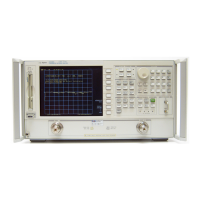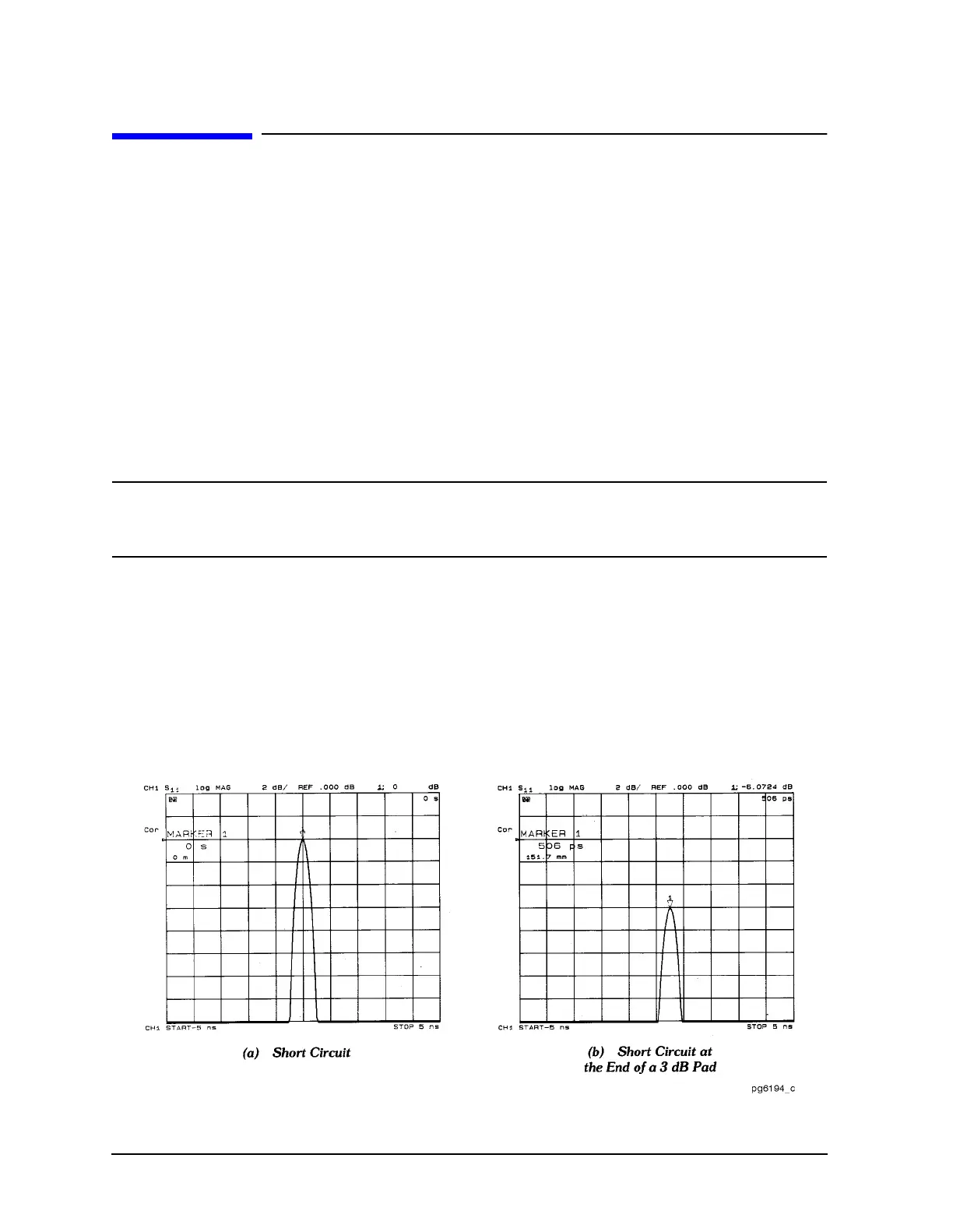3-26
Making Time Domain Measurements
Masking
Masking
Masking occurs when a discontinuity (fault) closest to the reference plane affects the
response of each subsequent discontinuity. This happens because the energy reflected from
the first discontinuity never reaches subsequent discontinuities. For example, if a
transmission line has two discontinuities that each reflect 50% of the incident voltage, the
time domain response (real format) shows the correct reflection coefficient for the first
discontinuity (ρ=0.50). However, the second discontinuity appears as a 37.5% reflection
(ρ=0.375) because only some the incident voltage reached the second discontinuity, and
some of that reflected energy is reflected off the first discontinuity as it returns. For two
discrete discontinuities, the apparent reflection of the second discontinuity is appears as
approximately , where is the apparent reflection of the second
discontinuity, is the reflection of the first discontinuity, and is the reflection of the
second discontinuity.
NOTE This example assumes a lossless transmission line. Real transmission lines,
with non-zero loss, attenuate signals as a function of the distance from the
reference plane.
As an example of masking due to line loss, consider the time domain response of a 3 dB
attenuator and a short circuit. The impulse response (log magnitude format) of the short
circuit alone is a return loss of 0 dB, as shown in Figure 3-21a. When the short circuit is
placed at the end of the 3 dB attenuator, the return loss is −6 dB, as shown in Figure 3-21b.
This value actually represents the forward and return path loss through the attenuator,
and illustrates how a lossy network can affect the responses that follow it.
Figure 3-21 Masking Example
ρ
ˆ
2
ρ
1
ρ
2

